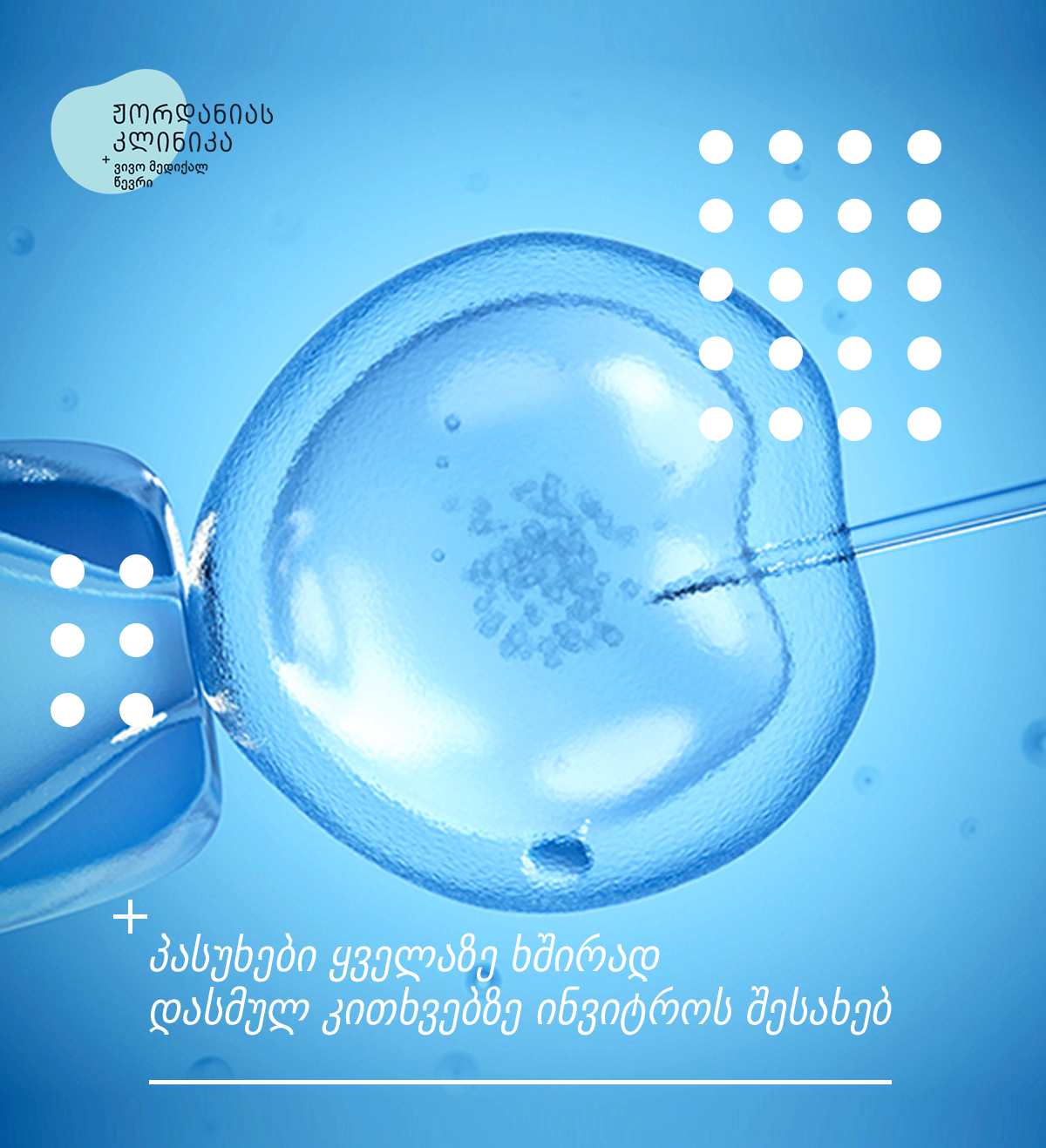Answers to the most common questions about Invitro
Rating:
Publication date: 11.06.2019
164

WHAT IS IVF FERTILIZATION?
In vitro fertilization is an assisted reproductive technology that is modern, safe and has already become routine.
WHAT ARE THE CLINICAL INDICATIONS FOR IVF?
Clinical indications for in vitro fertilization are infertility and genetic analysis of embryos.
WHAT DOES IVF FERTILIZATION MEAN?
At this time, the egg and sperm do not merge in the fallopian tube, but in the laboratory, where a safe and effective environment is created for the embryo.
WHAT IS INFERTILITY?
If a woman’s age is <35 years and a year of regular unprotected intercourse does not result in a pregnancy, the couple is considered infertile. And if the woman's age is > 35 years, then this period is reduced to 6 months.
WHAT IS INFERTILITY?
The reason can be both in men, when the spermatozoa are not complete, and in women, when any structure of the reproductive tract does not fulfill its physiological function. There is also infertility of unknown etiology.
WHAT ARE THE STAGES OF IVF FERTILIZATION?
The ovary is prepared, namely its stimulation, so that the follicles grow and the eggs mature. When the follicles reach the threshold, a special catheter is inserted into each follicle and the follicular fluid is collected. The liquid is sent to a laboratory to look for eggs. After their discovery, the egg is fertilized by sperm.
HOW IS FERTILIZATION OCCURRED?
There are two ways of fertilization. Firstly, when the process of in vitro fertilization is identical to natural. Thousands of spermatozoa are trying to penetrate the egg. and the second, when the embryologist artificially injects one spermatozoon into the cytoplasm of the egg (ICSI).
WHEN IS THE EMBRYO TRANSFERD TO THE UTERINE CAVITY?
After fertilization, a zygote is formed. The zygote reaches the morula stage by the third day of development, and the blastocyst stage by the fifth day. It is on the third and fifth days that the embryo is transferred into the uterine cavity.
WHAT SHOULD I DO IF I DON'T WANT TO TRANSFER THE EMBRYO TO THE UTERINE CAVITY?
The embryo is frozen and stored until the uterus is prepared.
HOW IS THE EMBRYO FREEZED?
There are two methods of cryopreservation: the "slow freezing" method and vitrification (transformation of water into a solid state by very rapid freezing without the formation of crystals).
WHICH CRYOPRESERVATION METHOD IS PREFERRED?
Vitrification is preferred because the incidence of embryo damage is lower.
IS IT POSSIBLE TO FREEZE SEMEN OR EGGS BY YOURSELF?
It is possible, but it is preferable to freeze the embryo, since the possibility of damage to the embryo during the freezing and thawing process is very small.
WHAT TYPES OF GENETIC ANALYSIS OF EMBRYOS EXIST?
Preimplantation genetic testing for monogenic diseases (PGT-M), preimplantation genetic testing for structural changes in chromosomes (PGT-SR), and preimplantation genetic testing for aneuploidy (PGT-A).



